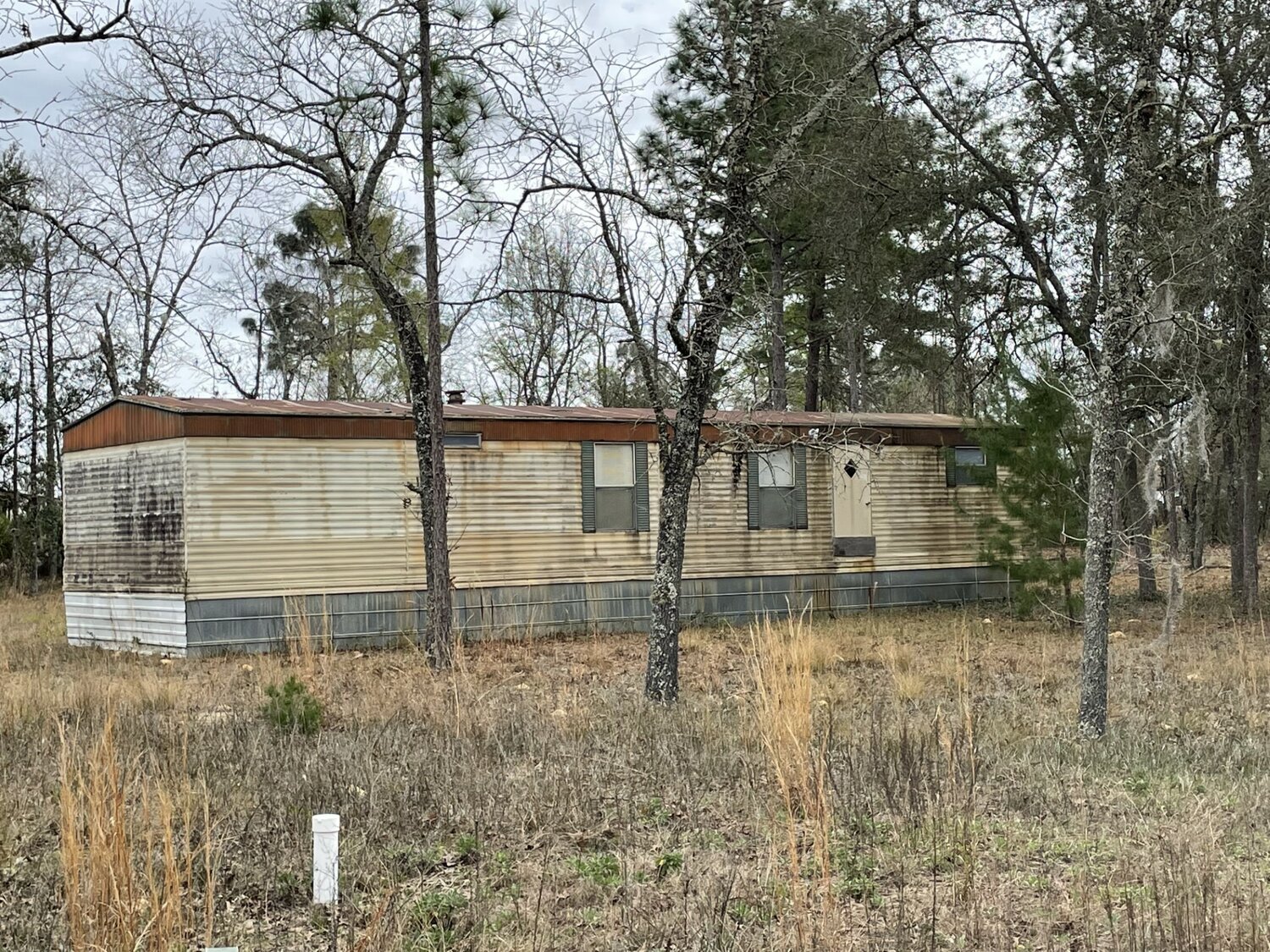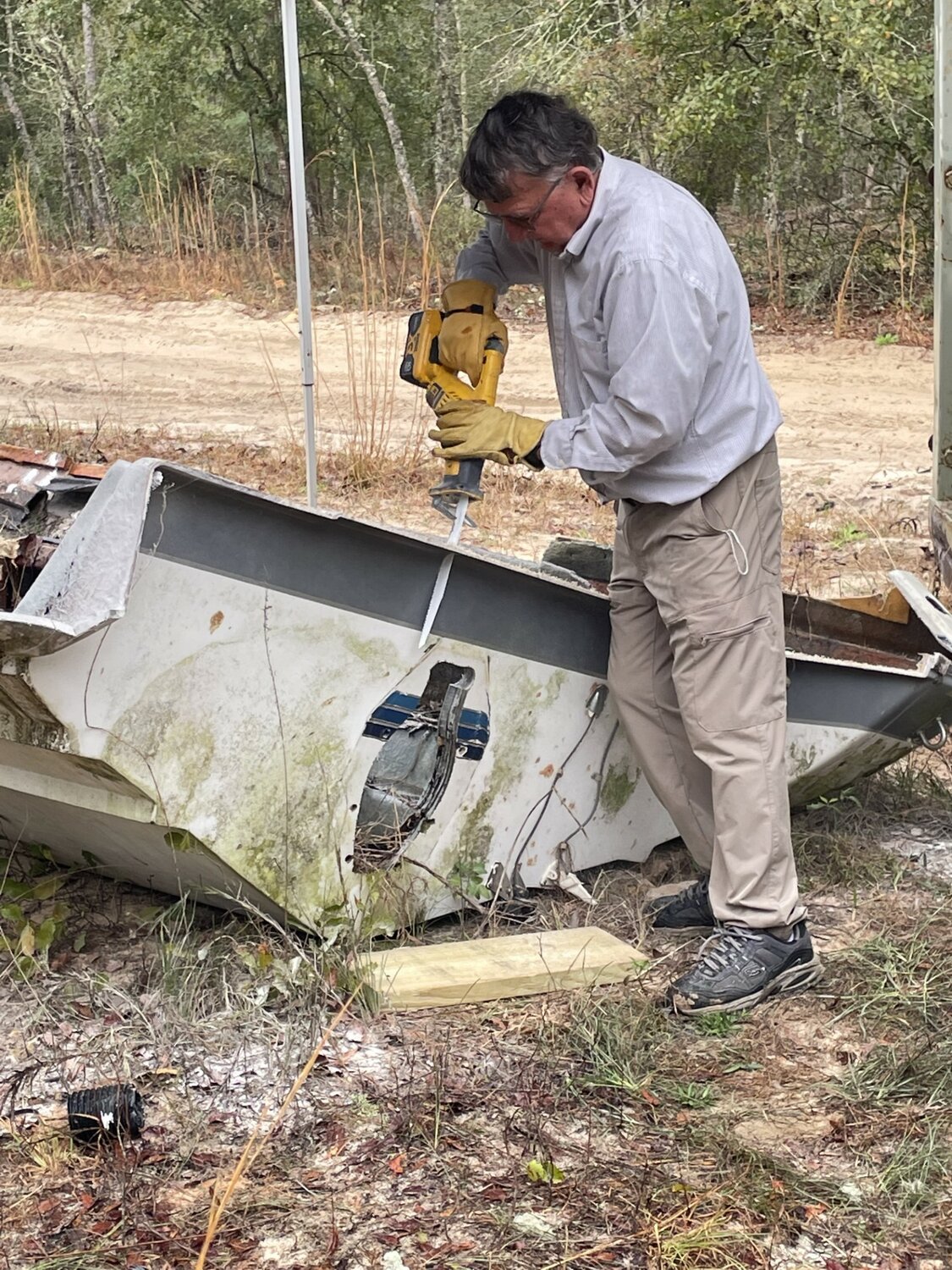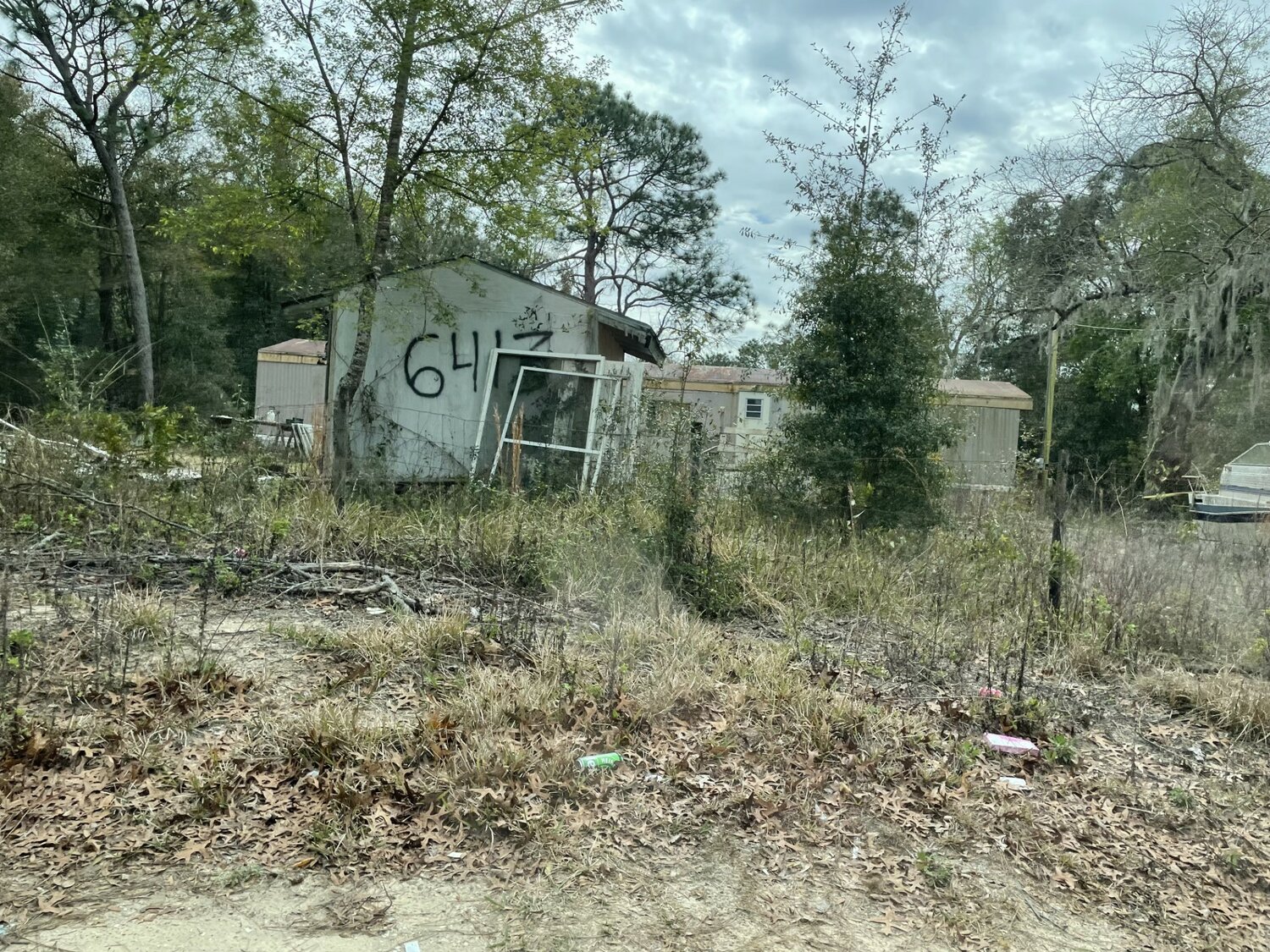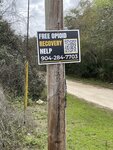Down a dirt road through High Ridge Estates
One year after the High Ridge Initiative
jack@claytodayonline.com
KEYSTONE HEIGHTS – There is an abandoned home down a dirt road through High Ridge Estates. Trash festers along the front yard. Plywood boards the windows shut. I knocked at the front door…
This item is available in full to subscribers.
Attention subscribers
To continue reading, you will need to either log in to your subscriber account, or purchase a new subscription.
If you are a current print subscriber, you can set up a free website account and connect your subscription to it by clicking here.
If you are a digital subscriber with an active, online-only subscription then you already have an account here. Just reset your password if you've not yet logged in to your account on this new site.
Otherwise, click here to view your options for subscribing.
Please log in to continueDon't have an ID?Print subscribersIf you're a print subscriber, but do not yet have an online account, click here to create one. Non-subscribersClick here to see your options for subscribing. Single day passYou also have the option of purchasing 24 hours of access, for $1.00. Click here to purchase a single day pass. |
Down a dirt road through High Ridge Estates
One year after the High Ridge Initiative
KEYSTONE HEIGHTS – There is an abandoned home down a dirt road through High Ridge Estates. Trash festers along the front yard. Plywood boards the windows shut. I knocked at the front door. Evidently, no one was home.
A nearby resident, who asked not to be identified, said that’s not usually the case.
The resident said squatters have recently taken shelter in what is now more of a shell than a house. Besides occasionally scavenging through the litter on the front lawn, the squatters keep quiet and to themselves, the resident said.
“Apparently, the original family vacated the lot, and it cost too much to foreclose. I’ve seen plenty of homeless coming and going. They don’t come on any other property. They’re quiet. I’m sure they’re glad they have a place where they can crash,” the resident said.
The resident expressed concern about drug use.
Unfortunately, this is not a unique story in the challenging history of High Ridge Estates, an unincorporated low-income community just outside the municipal boundary of Keystone Heights.
The characteristically rural community is a mosaic of homes connected by many winding dirt roads through sandhills and flatwoods.
In many cases, nature has reclaimed some portions. Sprangly pine trees continue to tower around a burned-down trailer. Moss patches around the black, ashen linoleum siding.
Rev. Carey Morford said God called her to dedicate her ministry to the High Ridge community. She has been an advocate for the community for many years, and she was at the Impact Clay Train at Keystone Heights Junior/Senior High last month.
“There’s a stigma that everyone is on drugs or is a sex offender. That is not true. I have found that to not be true,” she said.
In 1969, High Ridge was originally developed as a 55+ community – a development that never happened after the company abandoned the property. The idea was to draw in “unsuspecting out-of-state buyers with the promise of cheap land and sunshine,” according to the High Ridge Initiative report.
Instead, landowners were left with dirt roads and a lack of services.
Morford lives in High Ridge, and this is more than just being a good neighbor. She leads the Mission of the Dirt Road Church and has truly made it her mission to attend to the community's physical and spiritual needs.
The Mission is a safe, inviting place within walking distance of the community. A billboard reads, “Coffee, peace, and justice for all.” The church offers running water, food, coffee and community.
“There are lots of people in poverty, many are on social security, many are elderly. There are a number of reasons why things may not be great.”
I asked about the abandoned home.
“Those people were evicted,” said Morford. “We would love to help, but we can’t because we don’t have permission from the original owners,” said Morford.
“I get three or five phone calls a week of people losing housing or on the verge. There are a variety of different reasons – car accident, someone got sick – which starts a downward financial spiral,” she said.
The Mission hosts classes, support groups, neighborhood events, clean-up days, showers, health service programs and youth activities.
The Mission hosted another quarterly neighborhood cleanup on a rainy morning last Saturday. Volunteers had coffee, reviewed the plan, and drove out to the neighborhood.
The dirt roads made traversing the community difficult. It’s a bumpy, winding ride for a two-wheel drive. I swerved my car well away from gaping divots in the road. I was warned the muddy divots were easy to slip into, hard to escape from.
I also had to watch out for the loose chickens and dogs that wandered and followed alongside.
We got to work disassembling a motorboat. Apparently, it had been abandoned there for over a decade, one volunteer said. Before one volunteer got to work with a motorized handsaw, I was handed Personal Protective Equipment (PPE). I slipped on an N-95 mask, safety glasses and gloves to protect my body from the plume of fiberglass that erupted from where the handsaw cut the boat into more manageable, disposable pieces.
We carefully took the jagged fragments and placed them in a dumpster the county provided.
We walked along a dirt road, picking up trash. As we picked up various plastics and glass bottles, I spoke with one volunteer who grew up in High Ridge but has since moved away.
The most challenging part of living in High Ridge is the prevalence of drugs, the volunteer said. The volunteer said the inebriated would wander the street at night, so it was dangerous to go out alone.
I stopped myself as I reached down. I retracted my hand. There was a used syringe poking out under a wet pile of leaves. There was another one a few feet away.
The volunteer snapped a photo to show Morford.
A resident volunteer drove up with a pickup truck stuffed with bags of yard waste in the flatbed. Only a shovel remained after unloading all of the bags into a county dumpster. The resident said he never leaves home without it – especially on rainy days. He uses the shovel to dig his truck out when it gets stuck. When it rains – Morford joked – the gapping divots in the dirt road fill the size of lakes.
“There are no sidewalks and no retention ponds. When it rains, some of the 262 children in the community who go to school in Keystone Heights cannot get to the bus stop due to road conditions,” said the High Ridge Initiative report.
“In 2014, the county paved a main loop in High Ridge, and they continue to maintain all paved and graded roads. Some 20 miles of dirt roads remain, dotted with ruts and potholes, making entry difficult for emergency vehicles, school buses, etc.,” the report said.
High Ridge attempted an HOA, but it has been dissolved for 20 years.
“There are unconfirmed statements that suggest a history of malfeasance, and monies were misappropriated,” the report said.
However, despite the challenges inflicted upon the community, the High Ridge Initiative report is hopeful.
“High Ridge Estates has long suffered from neglect. The subdivision faces myriad issues—from unpaved roads to shallow/dry wells to homeless encampments. It wears the stigma of blight and crime. Vocal High Ridge residents, backed by the efforts of the Mission of the Dirt Road, are resolved to turn High Ridge into a thriving community. There are several forces in High Ridge’s favor. It is located between two arterial roads – State Roads 21 and 100, which intersect in Keystone Heights,” the report concludes.
The report cites the Mission of the Dirt Road Church as a substantial and positive influence on the community.
Morford was asked if the community has improved since the implementation of the High Ridge Initiate a year ago.
“I’m sure that different people would give you different answers, but it’s hard to say that hauling off more than 15 tons of tires and trash hasn’t brought some improvement to the neighborhood. I have had people who live in the neighborhood tell me that they think things are improving – they notice kids playing outside more often, and they feel like much of the neighborhood looks cleaner. However, we have some critics who would say we aren’t doing enough, fast enough. I feel the tension of both,” she said.
“When I started researching and working in the neighborhood more than a decade ago, I found it very difficult to have conversations with the Clay County government about what could be different and how it could be different. I’m pleased with how that conversation and relationship has grown, so I feel like we are seeing some improvements based on our advocacy.”
Still, Morford understands that the High Ridge community has a long "dirt" road ahead.
“I’ve heard it all. ‘Homelessness is a choice’ or ‘If they would just make better choices…’ Sometimes that can be true. But I know people who are doing the best they can and it’s still not enough.”















